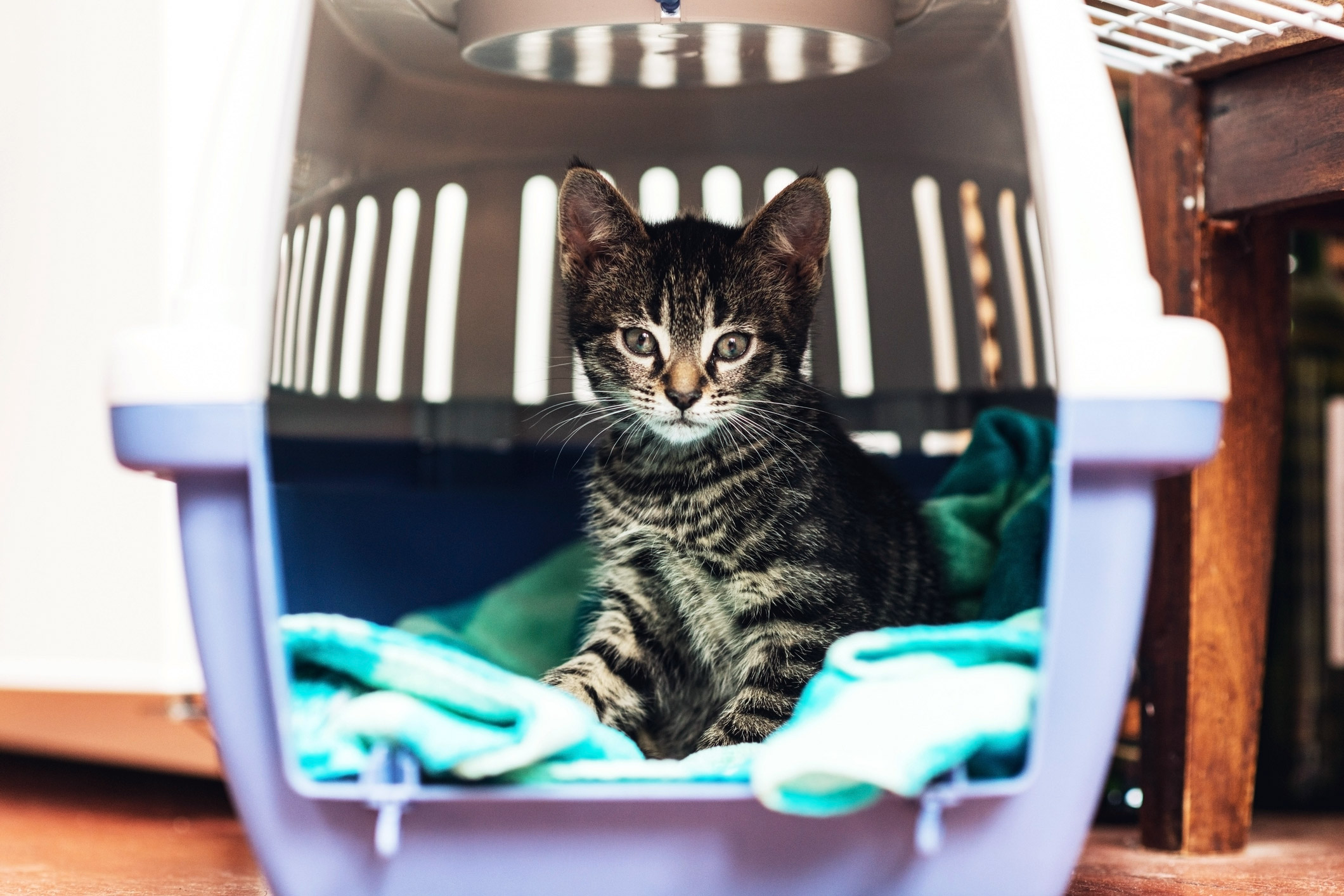The Benefits of Crate Training Your Cat
The idea of training your cat may either amuse or frighten you, but don’t worry—it is possible. According to experts, it isn’t that tough to teach your cat to accept a carrier, and once you do, you’ll find lots of practical reasons for containing your kitty.
The biggest benefit of crate training is safety. You’ll know where your cat is and he can still be a part of your activities. No more “‘fraidy cats” getting loose when workmen come into your house. No more hissing fits that annoy or frighten your visitors. No more contortionist cats crammed under the seat of your car. More and more, people are traveling with their cats, and for them, carriers are travel necessities. Loose cats can distract a driver, fall out of windows, get injured by loose objects or get wedged under the accelerator or dashboard. Also, many motels allow pets only when they are crated.
Another benefit of crate training is acceptance of a cage if the kitty must be boarded, hospitalized or shipped.

A carrier not only keeps these cats from getting into trouble, but also often serves as a safe haven – a cozy, contained space where the cat has privacy and a place of his own. Of course, a crate at home must be used humanely and not abused. No pet should be left alone in a crate for more than a couple of hours. Many cats find crates stressful at first. That fear can usually be overcome with patience and treats. You don’t have to face the grueling training task unprepared. Many pet shops offer pamphlets on crate training or even training videos. At the very least, when you’re buying a cat carrier, ask for the manufacturer’s sales sheet describing the crate’s features. It usually explains what size carrier to buy, various uses and the basics of crate training.
Here are some basic steps for crate training your cat:
• Place the carrier (with its door open) in a room where he can explore the crate on his own.
• Put food and toys inside to draw his attention. Leave the crate alone for several days
• The first time the cat enters the crate, he should not be locked inside for longer than 10 minutes. Gradually increase the amount of time he is locked inside. Do not let the cat out if he cries or hisses; that only reinforces bad behavior.
• Put favorite toys or soft bedding (particularly an old towel, blanket or sweater that carries your scent) inside the crate in order to help make him feel more secure.
• When kitty settles down, re-open the door to the carrier so he can come and go at will.
• Once your cat accepts the carrier, the next step is to get him used to movement. The crate should be picked up and carried around carefully. Talk soothingly and give treats.
• Slowly acclimate kitty to traveling in your car. At first, just sit in the car with him, and then take him on short errands. Each time you put your crated kitty in the car, increase your travel time. Make the experience as pleasant as possible using toys and treats. Don’t limit your car trips to visits to the veterinarian’s office and boarding kennel.
• Admittedly, for some cats, slow training doesn’t work. A quick method of getting a cat into a carrier is as follows: Sit the carrier up-ended so its open door is at the top. Hold the cat firmly by the scruff of the neck and gently lower him into the crate. Be sure to support the cat’s rump with your hand.
• Cat carriers (pet carriers) come in all sizes, designs, materials and prices. Pet stores, veterinary hospitals, catalog companies and online outfits offer large choices. Cardboard carriers are not recommended, as most cats can find ways to slip out and escape.